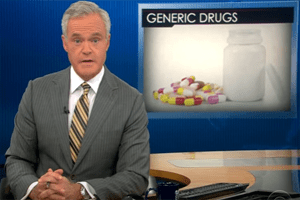
Low-Priced Drugs Linked To Injuries The pharmaceutical industry’s collective eyes are focused on a Supreme Court case regarding generic drugs that could very well determine the degree to which the public can hold generic drug makers liable for injuries allegedly caused by these lower-priced copies of branded medication. The Supreme Court, which heard arguments from […]

Low-Priced Drugs Linked To Injuries The pharmaceutical industry’s collective eyes are focused on a Supreme Court case regarding generic drugs that could very well determine the degree to which the public can hold generic drug makers liable for injuries allegedly caused by these lower-priced copies of branded medication.
The Supreme Court, which heard arguments from both sides on Tuesday, is expected to decide if manufacturers of generic drugs can be held accountable for any supposed design defects in their medications. Under current federal law, manufacturers virtually replicate the exact composition of the branded versions of the drugs they mimic.
If the Supreme Court ultimately decides that federal law bars product defect claims under state law, the result would be: It will become practically impossible to hold a generic drug maker accountable for injuries that their own drugs generate.
The specifics of the case in question center on Mutual Pharmaceutical Co., which has asked the Supreme Court to overturn a $21 million jury judgment to Karen Bartlett, who successfully sued the generic drug maker in 2008 for injuries she was alleging had been caused by the company’s drug sulindac, a generic painkiller. She won the trial in 14 days.
The Boston-based U.S. Court of Appeals for the First Circuit upheld the award; Mutual then brought an appeal to the Supreme Court.
Doctors had diagnosed Bartlett as falling victim to a “rare hypersensitivity reaction associated with the drug,” Reuters reported. Bartlett’s skin peeled off and was replaced by lesions that ruptured across two-thirds of her body, keeping her in a hospital burn unit for months – part of which she spent in an induced coma. Since then, doctors have operated on her eyes 13 times — but she is nearly blind, and also suffers from scarred lungs and a constricted esophagus.
As part of its effort to ask the Supreme Court to overturn the award, Mutual argues that federal law already bars claims such as Bartlett’s because the drug in question had already been approved by the U.S. Food and Drug Administration (FDA), and further, was already subject to federal law requiring generics to sport the same design as the branded drug it is seeking to mimic.
The company cites the 2011 Supreme Court ruling of PLIVA v. Mensing — which has killed in the crib a large volume of personal injury cases against generic drug manufacturers. In Mensing, the court found that generics were essentially protected by the federal law requiring them to have the same label as their branded counterpart.
During trial, Bartlett established the claim that sulindac was intrinsically hazardous and the design unreasonably dangerous and defective – a contention supported by the number of incident reports on skin reaction submitted to the FDA.
Mutual’s argument is that generic drug makers don’t control their product’s design, which must imitate its branded opposite number.
About 80 percent of all U.S. prescriptions are filled with generics, according to healthcare information provider IMS Health.
The personal injury attorneys at Parker Waichman LLP offer free, no-obligation case evaluations. For more information, fill out our online contact form or call 1-800-YOURLAWYER (1-800-968-7529).


